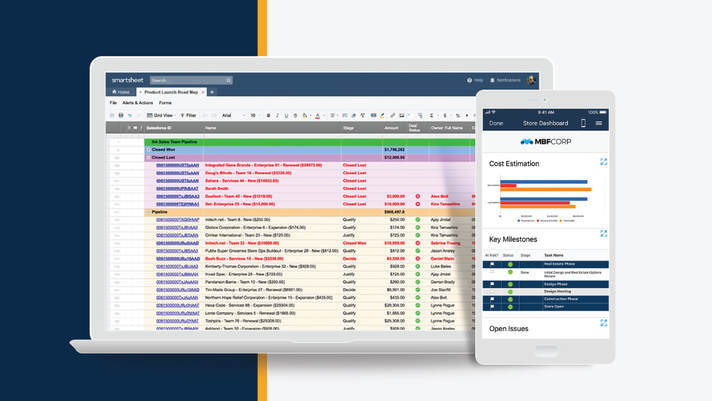|
by Stephen Danos on April 20, 2018
In today’s workplaces, the borders between teams, departments, and roles are blurrier than ever before. “Borderless teams” can be distributed across the globe or just down the hall from one another. They offer increased flexibility, reduced costs, and can be a powerful recruiting tool.
But they also create a new set of challenges. How can managers keep teams aligned and productive? How can teams gain access to the up-to-date information they need from other team members, in order to stay on the same page?
Many leaders see a competitive advantage in encouraging borderless collaboration since it enables teams to maximize talent across departments and time zones. When it’s working well, borderless collaboration also helps create a culture of collective problem-solving and idea generation. In addition, telecommuting in the United States grew 115% over the last decade, according to a recent study. More and more teams are interfacing from satellite offices through video conferences, email, cloud-based work management platforms, and various communications applications. While cross-border collaboration has its benefits, it’s not without drawbacks:
What are some things executives can do to encourage borderless teams without sacrificing productivity or engagement? Read on for some ways business leaders can help these teams thrive. Provide the Right Tools
Borderless teams are not a new concept, but the tools used to connect people across the world are changing. What’s needed now is a work management platform that enables teams to collaborate in real time and share the same view of work status — whether at a desk or in the field. With no barriers to sharing, publishing, and collecting information, one powerful tool for borderless teams is Smartsheet.
Smartsheet helps teams break out of silos, stay connected to mission-critical information at all times, and enables project managers and task owners to move processes along. With the right tools and integrations, teams can be more agile, connected, and help their companies stay competitive. Whether a team works for a medium or large enterprise company, Smartsheet gives them and their leadership unprecedented visibility and access to work in process through portals, dashboards, automated actions, and much more. For example, marketing teams might work with internal stakeholders and outside vendors, such as a marketing analytics company or a public relations firm. Through Smartsheet teams can share certain sheet columns with vendors while easing up on permissions for internal sales, product, and communication teams. It doesn’t matter if team members work on the same floor or across the world. With Smartsheet they can all stay connected to the information and everyday work processes that they need.
And when work schedules are constantly in flux, having a centralized, real-time work execution platform allows for 24/7 progress against goals, whenever and wherever the work gets done. Using the automation features in Smartsheet, any user can easily set up automated update requests — so workers get reminders to update their work progress on a regular schedule.
With the Smartsheet mobile application for iOS and Android, individuals can act fast on status update requests and modify sheets, dashboards, and forms right from their smartphone. This ongoing visibility via mobile helps to break down information silos and maintain productivity.
Smartsheet also integrates with popular applications and platforms — such as Slack, Google Hangouts, and Microsoft Office 365 — so workers can get work done in Smartsheet from within their favorite enterprise apps.
Offer Structure and Flexibility
Most leaders know that neglecting remote workers is generally not a great strategy. Sir Richard Branson recently shared some thoughts on how companies can benefit from letting employees work from home or, at the very least, encourage flexible schedules. And a 2017 Gallup study found that productivity and engagement increase when workers spend “60% to 80% of their time — or three to four days in a five-day work week — working off-site.”
Regular communication can play a big role with borderless teams, as do clear expectations around deadlines and responsibilities. With Smartsheet, remote workers can be kept in the loop on team objectives and put in the best position to help achieve them. Source: Smartsheet Blog |
|
Care line: +603-9212 0157
|
Leave us your inquiry |
|
This company is registered with the Ministry of Finance, Malaysia.
Equip your organisation with digital solutions & training that inspire innovation and joy at work. Copyright © 2024 57Network Consultancy Sdn. Bhd. Company Registration number : 202001020346 (1376666-K) All rights reserved. |









